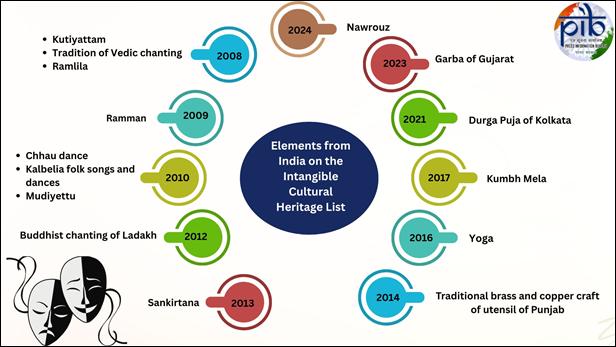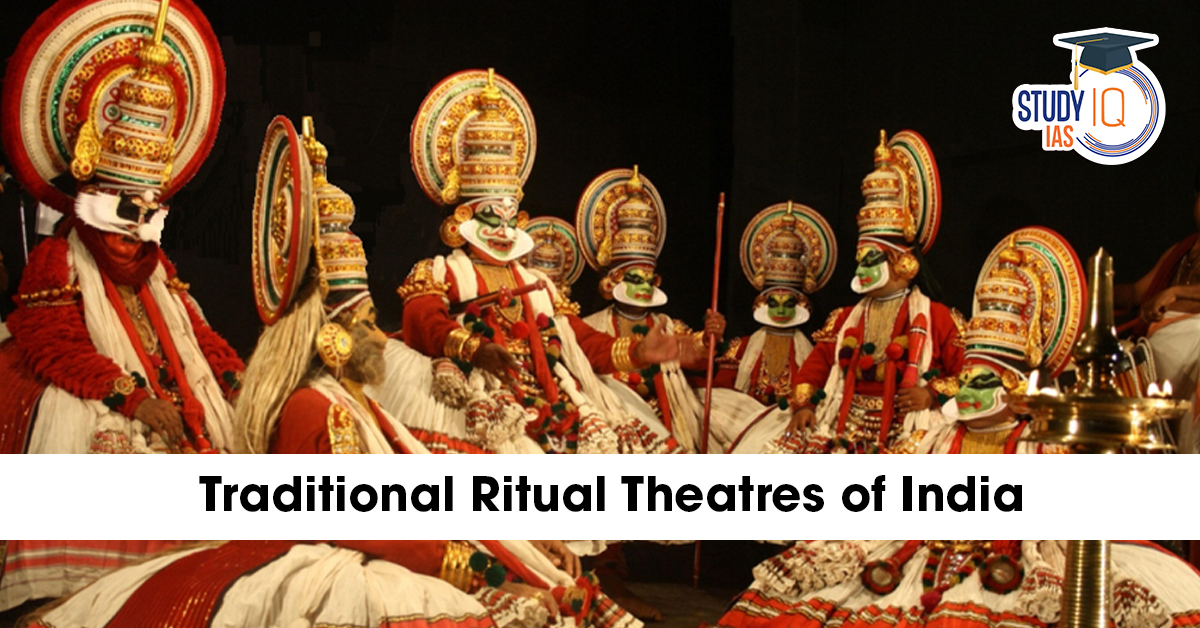Table of Contents
Context
4 Ritual theatre in India (Kutiyattam, Mudiyettu, Ramman, and Ramlila) was recognized by UNESCO as Intangible Cultural Heritage (ICH).
What is a Ritual theatre?
- A performance form combining sacred rituals with dramatic expression.
- Typically staged in temples, courtyards, and festival grounds.
- Involves acting, singing, dance, music, narration, puppetry, and ritual symbolism.
- Functions as:
- Devotion (invoking gods & myths),
- Social identity (community participation),
- Cultural transmission (values & traditions across generations).

UNESCO’s Intangible Cultural Heritage
- The UNESCO Intangible Cultural Heritage List is a global recognition given to living traditions and practices that communities pass down through generations.
- These are not physical monuments or sites (like the World Heritage List), but intangible practices such as festivals, rituals, dances, songs, craftsmanship, oral traditions, and theatre forms.
- According to the 2003 Convention for the Safeguarding of Intangible Cultural Heritage, ICH includes:
- Oral traditions and expressions (including language).
- Performing arts (dance, music, theatre).
- Social practices, rituals, festive events.
- Knowledge & practices about nature and the universe.
- Traditional craftsmanship.
| Ritual Theatre | Region | Key Features |
| Kutiyattam | Kerala |
|
| Mudiyettu | Kerala |
|
| Ramman | Uttarakhand (Garhwal Himalayas) |
|
| Ramlila | North India (esp. UP, Bihar, MP) |
|
Key Characteristics of Ritual Theatres
-
Religious or Mythological Themes – Most performances are tied to deities or epics.
-
Community Participation – Villagers or temple devotees often actively participate.
-
Integration of Dance, Music, and Drama – Multi-sensory experience.
-
Ritualistic Significance – Performance itself is considered an offering.
-
Elaborate Costumes and Masks – Enhances visual and spiritual impact.


 Commonwealth Games Host Cities (1930–2...
Commonwealth Games Host Cities (1930–2...
 G20 Summit 2025 Johannesburg: Full Outco...
G20 Summit 2025 Johannesburg: Full Outco...

























